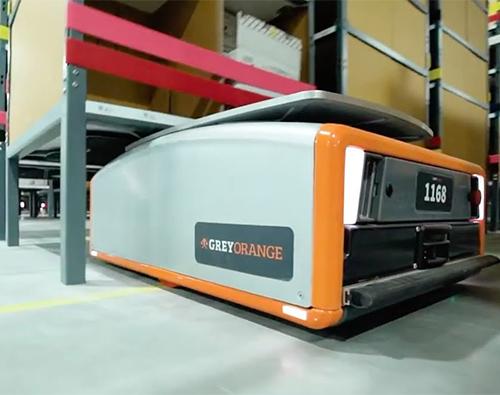

By Dan Berthiaume
Senior Editor, Technology
A global fashion giant is increasing the efficiency of online order fulfillment by implementing robotic technology in its North American warehouses.
H&M is leveraging robotic fulfillment systems from warehouse automation provider GreyOrange. In a recent exclusive interview with Chain Store Age, Pascal Faessler, head of Logistics Americas at Stockholm, Sweden-based H&M, explained the rationale behind the specialty retailer’s decision to deploy robotic supply chain technology.
“We’re always looking to optimize our systems and make a more seamless experience for our customers,” said Faessler. “Utilizing robotics in our warehouse facilities to complement our many talented employees is one way we can create a more streamlined service and increase our performance.”
According to Faessler, H&M based its selection of GreyOrange based on previous successful implementations of its warehouse automation technology at other companies, resulting in continuously higher performance and greater efficiencies. In its warehouses, H&M leverages GreyOrange robots to perform a wide variety of tasks.
“GreyOrange robots orchestrate omnichannel order fulfillment processes,” explained Faessler. This includes handling folded inventory and goods on hangar, as well as cross-channel inventory conversion through intelligent recall and re-slotting features. The robots also perform parallel batch picking, which allows us to pick multiple orders simultaneously.”
Faessler also cited robot-enabled warehouse capabilities such as autonomous picking, sorting based on carriers and ZIP codes, and the capacity to manage inventory and reserve buffer stock in one solution. And H&M obtains other advantages from robotic automation in its warehouses, as well.
“We have mobile transport units that automatically move to retail consolidation and packing stations once orders are complete,” he said. “And an order streaming capability ensures orders are consolidated in a way that considers service-level agreements, bundling by store departments and price point for allocation.”
“Combined with our skilled distribution center employees, our partnership is making it possible to continually exceed our customers’ expectations.”
As of the end of 2021, H&M operated roughly 4,800 stores worldwide.

According to recent analysis from Gartner, 75% of large enterprises will have adopted some form of intralogistics smart robots in their warehouse operations by 2026. Smart intralogistics robots are specialized forms of hybrid cyber-physical robotic automation, primarily aimed at warehouse and distribution center environments.
According to Gartner, intralogistics robotics address the need to automate certain processes by adding intelligence, guidance, and sensory awareness, allowing them to operate independently from and/or around humans. Gartner identifies flexible robot use cases such as transporting pallets of goods, delivering goods to a person or picking individual items.
Gartner analysis indicates intralogistics robotics solutions can more readily and inexpensively be implemented, and can be easily scaled to better manage extremes in peaks and troughs of demand. Because of the adaptive nature of intralogistics smart robots, companies can pilot use cases for low, upfront investment and continue to test new and varying use cases as they become more familiar with the technologies.
Read article on Chain Store Age.